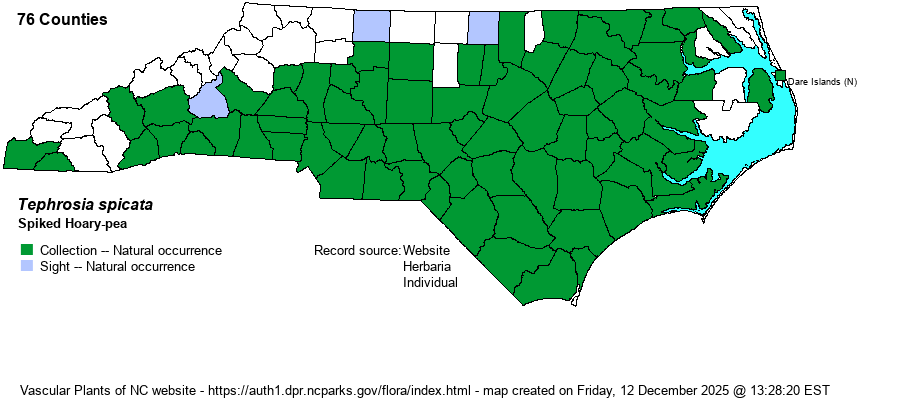| Author | (Walter) Torrey & A. Gray | |
| Distribution | Essentially throughout the Coastal Plain and Piedmont, but in the Mountains limited to the southern half (north to Buncombe County). Of spotty occurrence in the far northeastern Coastal Plain and the northwestern Piedmont near the VA line.
This is a Southeastern species, not limited just to the Coastal Plain as are several others in the genus. It ranges north to DE and southern KY, and south to southern FL and LA. It occurs into TN and essentially throughout MS, AL, GA, and the Carolinas. | |
| Abundance | Generally common in the Coastal Plain (except scarce in the far northeast), more so in the southern counties than farther north, especially numerous in the Sandhills region. Fairly common in the southeastern Piedmont, but somewhat uncommon in the central portions, and rare in the northwestern portions. Infrequent in the southern Mountains. | |
| Habitat | This is a species of dry soils, in many habitats. It occurs most often in pine/scrub oak sandhills, but also is present in other dry woods, along dry woodland borders, dry clearings, and various sandy places. | |
| Phenology | Blooms from June to August, and fruits from July to October. | |
| Identification | This is an erect to leaning and quite hairy species, reaching about 1-1.5 feet tall. It has scattered leaves that reach about 5 inches long, divided into 9-17 leaflets. Each leaflet is about 3/4-inch long but about 1/3-inch wide, with a rounded tip; all parts of the leaves are quite hairy, as well. From the leaf axils grow the long flower stalks, each about 5-6 inches long, with a few flowers at the end of the stalk. The flowers are similar to the other two small Tephrosia species -- T. florida and T. hispidula -- beginning bright white but quickly turning pink and remaining deep red to carmine for a longer period; they are each about 1/2-inch long. Separating these three is fairly simple; T. spicata is the only one with strongly hairy/hirsute stem and leaves, with hairs standing straight out and not appressed; T. hispidula is somewhat glabrous but has leaflets with distinctly pointed tips, and T. florida has a flattened flower stalk (rounded in the other two) and very long leaf petioles (as compared with nearly sessile in the other two). T. spicata is often encountered on walks in drier places in the Coastal Plain and southeastern Piedmont, especially in the Sandhills in pine/scrub oak sandhills. Though not nearly as large and conspicuous as T. virginiana, it is still a very numerous species in the state (an S5 State Rank as assigned by the website editors), so why this is only given a G4G5 Global Rank by NatureServe is a mystery. Needless to say, the website editors suggest a G5 global Rank. | |
| Taxonomic Comments | None
| |
| Other Common Name(s) | Tawny Goat's-rue, Red Hoary-pea | |
| State Rank | S5 | |
| Global Rank | G4G5 [G5] | |
| State Status | | |
| US Status | | |
| USACE-agcp | | |
| USACE-emp | | |

